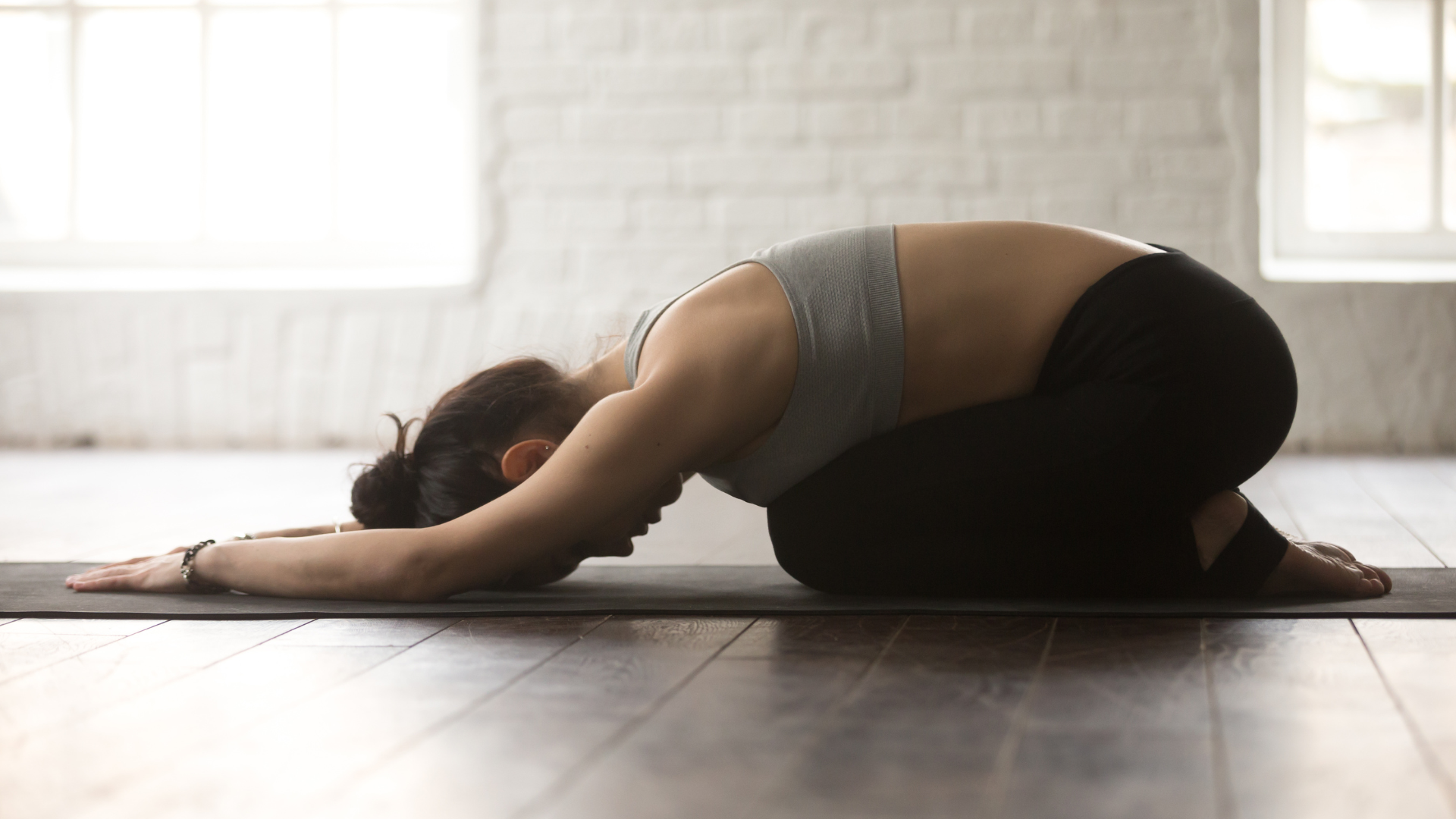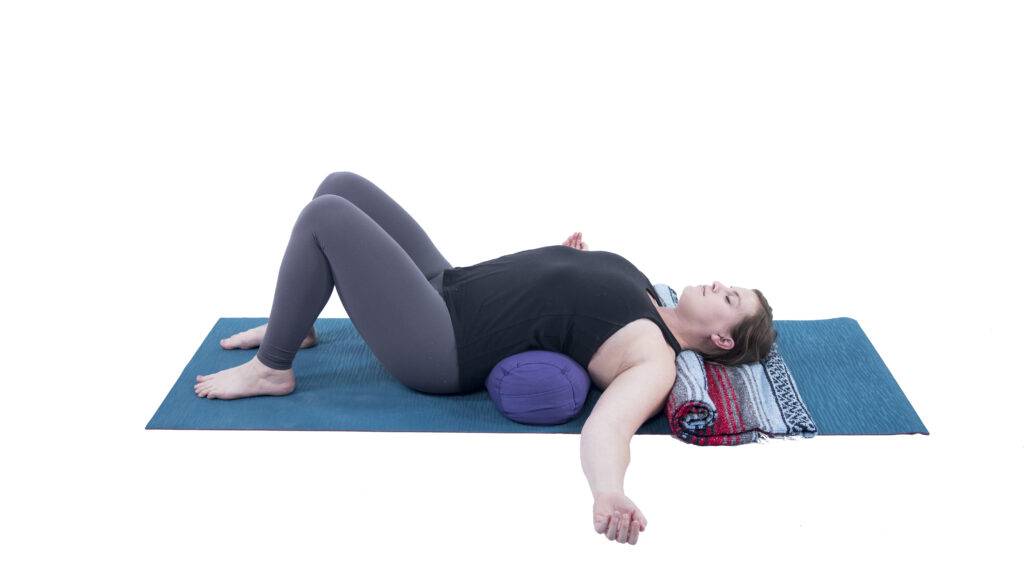For Lower Back Pain Try Yoga, Doctors Say

Article At A Glance
Low back pain affects millions of adults yearly, presenting a major global health burden. It is one of the leading causes of physician visits and the number one reason for missed work days. It can be acute, lasting up to 4 weeks; subacute, lasting between 4 and 12 weeks—or chronic, lasting 12 weeks or more.
In spite of its considerable prevalence, the discouraging news is that there is no clear-cut treatment for low back pain. It is often attributed to nonspecific factors, and people struggling with back pain often go from doctor to doctor without finding lasting relief.
So, that begs the question, with a growing number of research studies documenting the benefits of yoga for back pain, is yoga considered a viable adjunctive treatment option for back pain?
Indeed, the American College of Physicians (APC) now includes guidelines in the Annals of Internal Medicine encouraging non-pharmaceutical therapies like yoga, mindfulness meditation, tai chi, and massage as the first lines of treatment.
Causes of Low Back Pain

Research has shown that low back pain may be attributed to a number of factors, including obesity, depression and anxiety, injury, and structural, anatomical, and biomechanical factors. But this is only part of the story.
We are now beginning to recognize low back pain as a biopsychosocial condition rather than purely a medical one. This has lead to a greater acceptance of creative treatment strategies that move beyond the traditional use of painkillers, some of which are highly addictive. Unfortunately, given the ubiquity of potential causes, there is no single treatment that can cure low back pain.
ACP Recommendations for Treating Low Back Pain
The ACP guidelines are based on a review of randomized controlled trials and systematic reviews of noninvasive pharmacological and nonpharmacological therapies for back pain published in English language journals between January 2008 and November 2016. To be considered, studies needed to include the evaluation of the reduction or elimination of low back pain and assess functional improvement, quality of life, work disability and the return to work, time between episodes, adverse effects, and patient satisfaction.
Based on these criteria, when it comes to acute or subacute low back pain, the ACP recommends that physicians and patients opt for nonpharmacological treatments that involve heat, movement, massage, acupuncture, or spinal manipulation as the first course of action. If pharmacological treatment is necessary, nonsteroidal anti-inflammatory drugs or skeletal muscle relaxants may be used in lieu of opiates or other painkillers.
Yoga for Low Back Pain

The ACP recommends exercise and treatments for chronic low back pain, including mindfulness-based stress reduction (MBSR), yoga, tai chi, progressive muscle relaxation, and/or psychological approaches like cognitive behavioral therapy and biofeedback. The report finds that yoga may improve pain and function relative to usual care and education and be favored over general forms of exercise.
In the event that pharmacological options are warranted, nonsteroidal anti-inflammatory drugs are again recommended, with opiates only being used when the benefits outweigh the risk. (Note: the US Food & Drug Administration and Centers for Disease Control made stringent recommendations in 2016 limiting the use of opiate painkillers).
Of the mindfulness-based treatment options, MBSR has been found to have the strongest evidence in support of pain relief and functional improvement. MBSR uses a combination of mindfulness meditation, yoga, and attentional exercises that cultivate present-moment awareness and non-judgment to create a greater sense of acceptance and well-being. In a study published in the Journal of the American Medical Association in 2016, researchers found that MBSR and cognitive-behavioral therapy were just as effective as painkillers in reducing the symptoms of low back pain.
A growing body of research of the use of yoga in the treatment of low back pain also confirms that yoga may be effective in relieving symptoms. This is consistent with a review and meta-analysis published in the Clinical Journal of Pain in which individuals participating in a yoga program reported significantly reduced short-term (roughly 12 weeks) and long-term (approximately 12 months) pain and back-specific disability compared to controls. There were no differences between groups for health-related quality of life. No serious adverse events were reported.
ACP recommendations concur that yoga and other mindfulness practices may benefit those with chronic back pain, and provide a satisfactory alternative to general exercise and traditional forms of drug therapy. The report cautions that the quality of evidence is generally low due to methodological issues in the research and emphasizes that therapies be administered only by those with sufficient training and experience.
Want to learn more about how yoga can help with back pain? See 4 Reasons for Back Pain and How Yoga Can Help
 B Grace Bullock, Ph.D., E-RYT 500, is a psychologist, research scientist, educator, author, yoga and mindfulness expert, and creator of BREATHE: 7 Skills for Mindful Relationships. Her mission is to reduce stress, increase health and well-being and improve the quality of relationships. She offers classes, workshops, writing, and research that combine the wisdom of applied neuroscience, psychophysiology, psychology, and contemplative science and practice. Her goal is to empower individuals, groups, leaders, and organizations to reduce chronic stress and increase awareness, attention, compassion, mindfulness and effective communication to strengthen relationships, release dysfunctional patterns and unlock new and healthy ways of being. Dr. Bullock is a Certified Viniyoga Therapist and Faculty at the Integrated Health Yoga Therapy (IHYT) Training program. She is the former Senior Research Scientist at the Mind & Life Institute and former Editor-in-Chief of the International Journal of Yoga Therapy. For more information see www.bgracebullock.com
B Grace Bullock, Ph.D., E-RYT 500, is a psychologist, research scientist, educator, author, yoga and mindfulness expert, and creator of BREATHE: 7 Skills for Mindful Relationships. Her mission is to reduce stress, increase health and well-being and improve the quality of relationships. She offers classes, workshops, writing, and research that combine the wisdom of applied neuroscience, psychophysiology, psychology, and contemplative science and practice. Her goal is to empower individuals, groups, leaders, and organizations to reduce chronic stress and increase awareness, attention, compassion, mindfulness and effective communication to strengthen relationships, release dysfunctional patterns and unlock new and healthy ways of being. Dr. Bullock is a Certified Viniyoga Therapist and Faculty at the Integrated Health Yoga Therapy (IHYT) Training program. She is the former Senior Research Scientist at the Mind & Life Institute and former Editor-in-Chief of the International Journal of Yoga Therapy. For more information see www.bgracebullock.com
Sources
Qaseem, A., Wilt, T.J., McLearn, R.M., Forciea, M.A. (2017). Noninvasive treatments for acute, subacute, and chronic pain: A clinical practice guideline from the American College of Physicians. Annals of Internal Medicine. DOI: 10.7326/M16-2367
Cherkin, D.C., Sherman, K.J., Balderson, B.H., Cook, A.J., Anderson, M.L., Hawkes, R.J. et al. (2016). Effect of Mindfulness-Based Stress Reduction vs Cognitive-Behavioral Therapy of Usual Care on Back Pain and Functional Limitations in Adults With Chronic Low Back Pain: A Randomized Clinical Trial. JAMA, 315(12):1240-1249. doi:10.1001/jama.2016.2323
Cramer H, Lauche R, Haller H, Dobos G A systematic review and meta-analysis of yoga for low back pain. Clin J Pain. 2013;29:450-60.
Deyo, R.A. Von Korff, V. Duhrkoop, D. Opiods for Low Back Pain (2015). BMJ, 350 doi: http://dx.doi.org/10.1136/bmj.g6380



